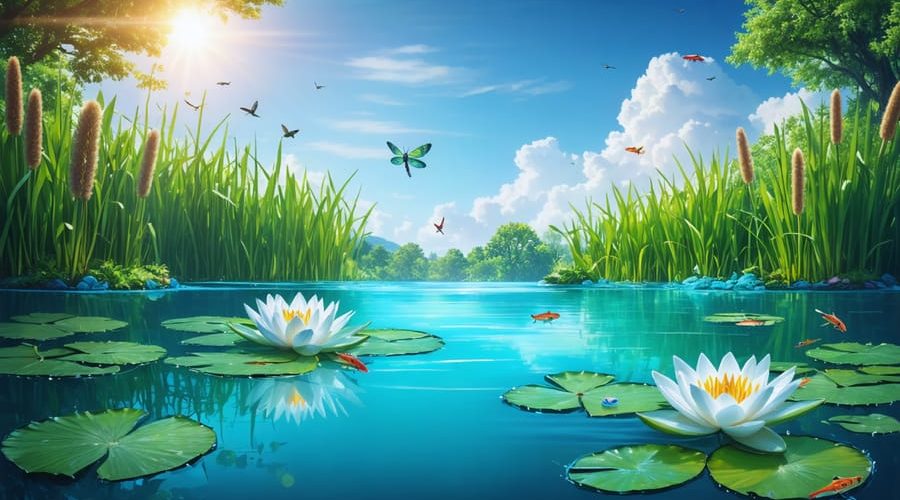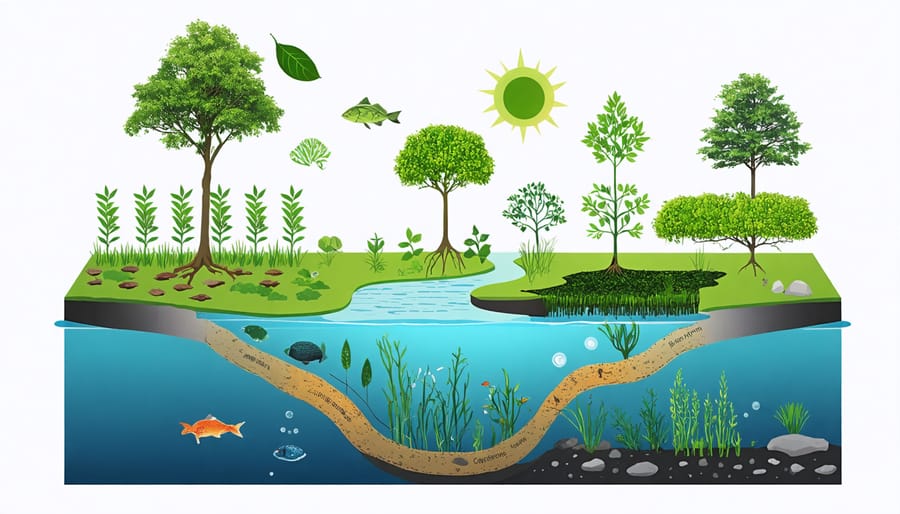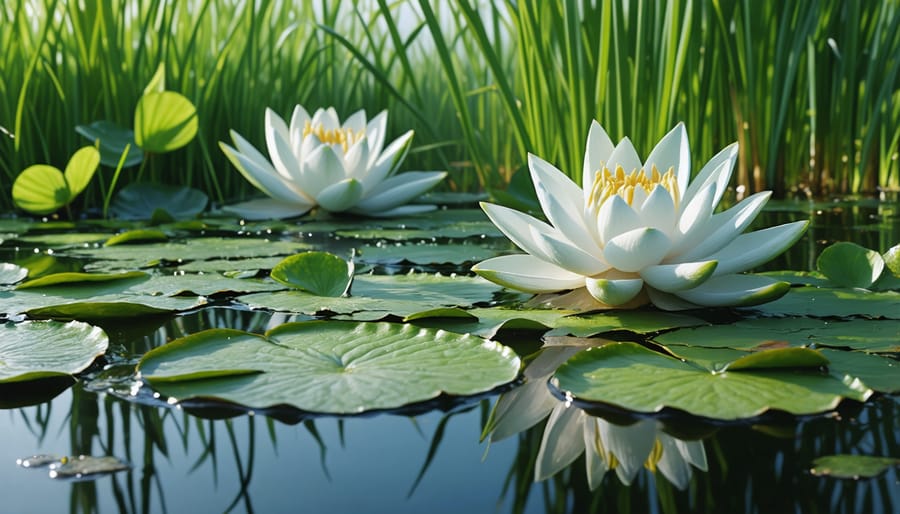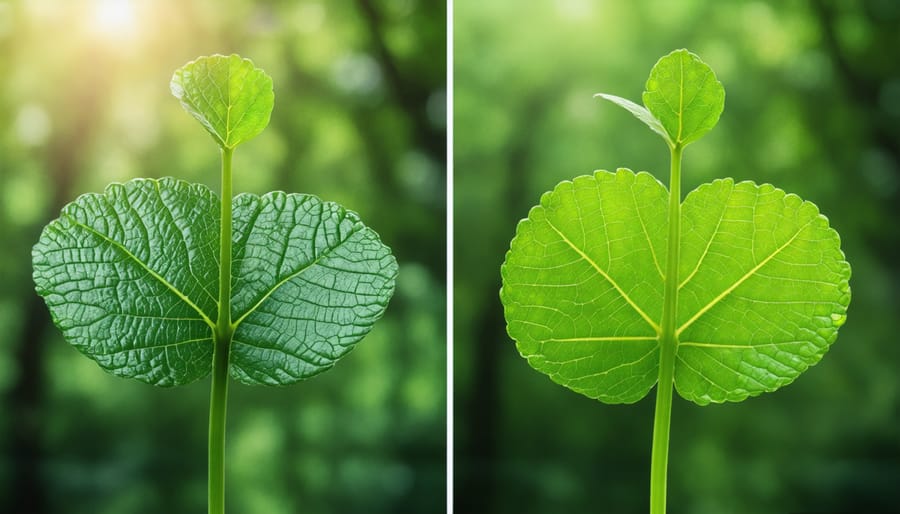
Transform Your Pond into a Natural Carbon-Capturing Paradise
A biopond transforms your backyard into a thriving ecosystem, naturally filtering water while creating a sanctuary for local wildlife. Unlike traditional water features, these self-sustaining aquatic environments harness the power of beneficial bacteria, aquatic plants, and natural biological processes to maintain crystal-clear water without heavy chemical intervention. Picture a living, breathing habitat where dragonflies dance across water lilies, frogs chorus at dusk, and native fish glide through carefully balanced waters. Whether you’re looking to reduce your environmental footprint, create a low-maintenance water feature, or establish a vibrant backyard ecosystem, a properly designed biopond offers the perfect blend of natural beauty and ecological function. Best of all, these systems work tirelessly to capture carbon dioxide, support biodiversity, and provide a peaceful retreat right in your own garden. Ready to dive into the world of natural pond keeping? Let’s explore how to create your own thriving aquatic ecosystem that benefits both your landscape and the planet.
The Science Behind Biopond Carbon Management
The Natural Carbon Cycle in Ponds
In a biopond, nature orchestrates a fascinating dance of carbon exchange. Plants and algae work tirelessly during daylight hours, absorbing carbon dioxide from the water and air through photosynthesis. Carbon dioxide’s role in plant growth is particularly vital in these aquatic ecosystems, where it helps create the sugars that feed both the plants and the beneficial microorganisms living in your pond.
At night, the process reverses as plants release some CO2 back into the water. Meanwhile, fish and bacteria continuously contribute to this cycle by releasing carbon dioxide through respiration. This natural give-and-take helps maintain a healthy balance in your pond’s ecosystem. The dissolved CO2 also helps regulate your pond’s pH levels, creating optimal conditions for both plant and animal life to thrive. When this cycle functions properly, your biopond becomes a self-sustaining mini-ecosystem that contributes to a healthier environment.

Key Players in Carbon Capture
In a biopond, several key organisms work together to process carbon dioxide naturally. At the foundation, aquatic plants like water lilies and hornwort actively absorb CO2 during photosynthesis, converting it into oxygen and plant material. Underneath the surface, beneficial algae play a similar role, though in smaller amounts. These photosynthetic organisms are supported by a variety of bacteria that break down organic matter and help regulate carbon levels.
The real workhorses of CO2 processing are often the smallest pond inhabitants. Microscopic phytoplankton form a natural soup that actively captures carbon dioxide while providing food for other pond life. Floating plants like duckweed are particularly efficient carbon processors, covering the surface and rapidly multiplying while absorbing CO2. Even the pond’s fish contribute to the cycle, releasing CO2 that plants can use, creating a balanced ecosystem where nothing goes to waste.
Creating Your Carbon-Smart Biopond
Essential Plant Selection
Selecting the right plants for your biopond is crucial for maximizing aquatic ecosystem benefits and carbon capture. Start with floating plants like water lilies and lotus, which provide excellent surface coverage while absorbing significant amounts of CO2 through their broad leaves. These beauties not only look stunning but also help regulate water temperature and reduce algae growth.
Don’t forget about submerged oxygenators like Hornwort and Elodea – they’re the real workhorses of carbon capture below the surface. These plants act like underwater forests, constantly filtering water and converting CO2 into oxygen through photosynthesis.
For the pond margins, consider reed plants such as Cattails and Rush. These tough customers have extensive root systems that help stabilize the pond edge while processing nutrients and capturing carbon. Plus, they provide natural habitat for beneficial insects and small wildlife.
Mix in some marsh marigolds and water iris for seasonal color and additional filtering power. Remember to include at least 60% surface coverage with a combination of these plants for optimal carbon capture. Start with hardy varieties if you’re new to water gardening – they’re more forgiving while you learn the ropes.
Keep in mind that different climate zones will affect plant choices, so always check what thrives in your local area before making final selections.

Beneficial Microorganisms
Creating a thriving microbial community in your biopond is like building a tiny underwater city of helpful organisms. These beneficial bacteria and microorganisms are the unsung heroes that keep your pond naturally balanced and healthy.
Start by introducing beneficial bacteria through quality pond starter cultures, which you can find at most garden centers. These cultures contain various strains of beneficial bacteria that help break down waste and maintain water quality. Add them during the warmer months when water temperatures are above 55°F (13°C), as this is when bacteria are most active.
To help your microscopic helpers thrive, provide them with plenty of surface area to colonize. Adding biological filter media, rocks, and plants creates perfect homes for these beneficial communities. Regular maintenance is key – avoid aggressive cleaning that might disrupt these colonies. Instead, gentle rinsing of filter media in pond water preserves the good bacteria while removing excess debris.
Feed your beneficial microorganisms by maintaining a steady supply of organic matter, but be careful not to overload the system. A moderate amount of fish waste and plant debris provides necessary nutrients for bacterial growth. Consider adding barley straw or similar natural products that slowly decompose and support healthy bacterial populations.
Remember to be patient – establishing a robust microbial ecosystem takes time, usually several weeks to a few months. Once established, these tiny workers will help maintain crystal-clear water and happy, healthy fish.
Maintaining Your Biopond System
Seasonal Care Tips
Your biopond requires different care throughout the year to maintain its health and balance. In spring, start by removing debris and dead plant material that accumulated over winter. Test your water quality and gradually reintroduce beneficial bacteria as temperatures rise above 50°F. This is also the perfect time to divide and replant any overgrown aquatic plants.
Summer calls for regular monitoring of water levels due to increased evaporation. Keep an eye on algae growth and maintain proper filtration. Consider adding floating plants to provide shade and reduce water temperature. Remember to feed fish more frequently during this active season.
As autumn approaches, reduce feeding and begin removing falling leaves before they sink and decompose. Install pond netting to catch leaves and protect your fish from predators. Cut back dying plant material to prevent excess organic matter from building up.
Winter maintenance focuses on keeping a small area free from ice for gas exchange. If you live in a cold climate, consider using a pond heater or aerator. Avoid breaking ice directly on the pond surface, as this can harm hibernating fish. Instead, place a hot pan on the ice to melt a hole gently.
Monitoring System Health
A healthy biopond shows several clear signs that tell you everything’s working as it should. The water should be crystal clear, allowing you to see the bottom of your pond easily. Healthy fish swimming actively and showing vibrant colors are another positive indicator. You’ll notice a gentle, earthy smell – never anything unpleasant or swampy.
Plant life should be thriving, with underwater plants showing steady growth and surface plants looking lush and green. Regular monitoring nutrient levels is essential, but you can also look for natural signs. A good balance of beneficial algae (the kind that grows on rocks, not the stringy stuff) indicates healthy carbon processing.
Watch for small insects and beneficial microorganisms around your pond – they’re a sign of a thriving ecosystem. Water movement should be consistent, with no stagnant areas. The edges of your pond should be active zones where plants, insects, and possibly amphibians gather, creating a natural transition between water and land. These signs together show your carbon management system is doing its job perfectly.

Common Challenges and Solutions
Managing a biopond comes with its share of challenges, but don’t worry – most common issues have straightforward solutions. Let’s tackle the most frequent problems pond owners encounter and how to solve them.
Algae overgrowth is perhaps the most common challenge. When your pond’s carbon levels are imbalanced, you might notice green water or stringy algae forming. The solution often lies in adding more floating plants, which compete with algae for nutrients. Consider water lilies or duckweed, which naturally absorb excess carbon while providing shade.
Poor water clarity can be frustrating, especially when you want to enjoy viewing your fish. This usually happens when there’s too much organic matter decomposing in the pond. Regular maintenance, including removing fallen leaves and debris, helps maintain crystal-clear water. Installing a skimmer can make this task much easier.
Maintaining proper pH levels can be tricky. When carbon dioxide levels fluctuate, your pond’s pH can swing too high or low, stressing fish and plants. Testing water regularly and adding pH buffers when needed helps maintain stability. Natural solutions like crushed coral or limestone can help regulate pH levels gradually.
Fish stressed by poor water quality is another common concern. Signs include fish gasping at the surface or being less active than usual. Ensure your filtration system is working properly and consider adding an air pump to increase oxygen levels, especially during warm weather.
Seasonal transitions can be challenging, particularly in managing carbon cycles. As temperatures change, bacterial activity fluctuates, affecting the pond’s balance. Gradually adjust feeding schedules and filtration rates with the seasons. Adding beneficial bacteria in spring helps jump-start the biological filtration system after winter.
Remember, a healthy biopond is all about balance. Regular monitoring and small adjustments are better than major interventions. If you’re facing persistent issues, start with the simplest solution first and give it time to work before trying more dramatic measures.
Creating a biopond is more than just a gardening project – it’s a commitment to fostering a thriving ecosystem in your backyard. By following the principles and practices we’ve discussed, you can establish a self-sustaining aquatic environment that benefits local wildlife while creating a stunning focal point for your outdoor space. Remember to start small, maintain patience during the establishment period, and regularly monitor your pond’s health indicators. The rewards of a well-maintained biopond are endless: crystal-clear water, happy fish, flourishing plants, and the satisfaction of supporting local biodiversity. Whether you’re a beginner or an experienced pond keeper, implementing these natural approaches will help you create a balanced, beautiful water feature that brings joy for years to come. Take the first step today – your perfect biopond adventure awaits!
